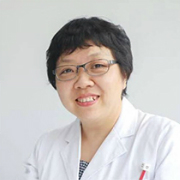- Factors Related to Prognosis of Refractory Glaucoma with Diode Laser Transscleral Cyclophotocoagulation Treatment
- 作者:张顺华|发布时间:2013-06-20|浏览量:730次
Factors Related to Prognosis of Refractory Glaucoma with Diode Laser TransscleralCyclophotocoagulation Treatment
Shun-hua Zhang, Fang-tian Dong, Jin Mao*, and Ai-Ling Bian
Department of Ophthalmology, Peking Union Medical College Hospital, Peking Union Medical College, Chinese Academy of Medical Sciences, Beijing 100730, China
Key words: predictive factor; diode laser; transscleral cyclophotocoagulation; intraocular pressure
Objective To evaluate the predictive factors of refractory glaucoma treated with diode laser transscleral cyclophotocoagulation (TSCP) in a midterm observation.
Methods Fifty-four consecutive patients (54 eyes) with refractory glaucoma were enrolled and underwent TSCP (power of 1.5-2.0 W, exposure time of 2 seconds and 20-50 applications). Patients were regularly followed up for 12 months. Intraocular pressure (IOP) measured before TSCP treatment and at each follow-up visit. Patients were divided into the sensitive and insensitive groups according to the effect of a single treatment of TSCP on IOP. The success rate was defined as the percentage of eyes achieving an IOP of between 5 and 21 mm Hg following TSCP therapy at their final follow up visit. Difference of age between the sensitive and insensitive groups was evaluated with Independent-samples T test and that of gender distribution of two groups was evaluated with Fisher’s exact test. The success rate of different types of glaucoma to TSCP was calculated.
Results A total of 32 patients were sensitive to TSCP (sensitive group) and 22 patients were insensitive to TSCP (insensitive group). The success rates of female (77.8, 14/18) and cases being over 50 years (71.4%, 20/28) were higher than those of male (50.0%, 18/36) and ones being under 50 years (46.2%, 12/26). The age of sensitive and insensitive groups was 56.0±15.5 and 46.4±15.4 years, respectively (P=0.029). The age (P=0.029) and gender distribution (P=0.046) of the two groups had significant difference. The success rate of neovascular glaucoma, primary angle-closure glaucoma (PACG), primary open angle glaucoma, traumatic glaucoma, uveitic glaucoma, and secondary glaucoma after silicone oil injection to TSCP was 57.1%, 100.0%, 50.0%, 20.0%, 81.8%, and 0%, respectively.
Conclusions Age, gender, and type of glaucoma appear to be associated with effect of TSCP on IOP control.




